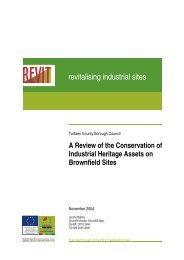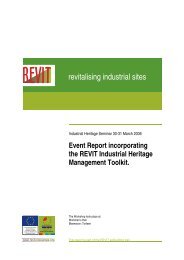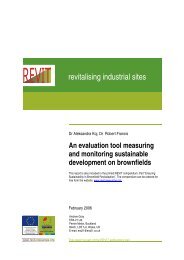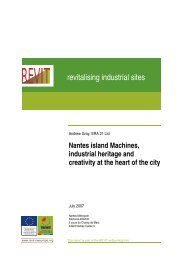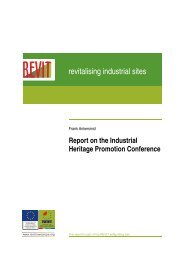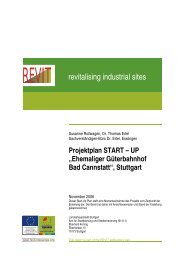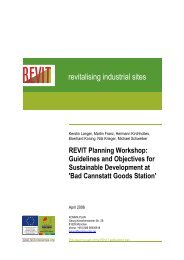STAKEHOLDER ENGAGEMENT - A TOOLKIT - REVIT
STAKEHOLDER ENGAGEMENT - A TOOLKIT - REVIT
STAKEHOLDER ENGAGEMENT - A TOOLKIT - REVIT
You also want an ePaper? Increase the reach of your titles
YUMPU automatically turns print PDFs into web optimized ePapers that Google loves.
• Characteristics and capabilities of participants<br />
As a process’s purpose is defined by its scope and context (and viceversa),<br />
so the identification of stakeholders is determined by the<br />
background (i.e. context) of the communities/stakeholder groups at which<br />
the engagement process is targeted. Before any engagement process is<br />
begun, it is wise to do background research on the following<br />
- Identify which sectors of society are unlikely to participate (for<br />
e.g. from disadvantaged neighbourhoods) but whom would add<br />
value to the process if they did participate, and how best to reach and<br />
support their involvement<br />
- Assess existing relationships between key participants (e.g.<br />
antagonism or political alliances), including these groups relationship<br />
with the consulting authority and/or relevant decision-makers<br />
- Consider the diversity of participation experience amongst the<br />
identified stakeholder groups. Those with more experience may<br />
have skills and confidence to dominate proceedings. The process<br />
may need to be designed to deal with these differences if they are<br />
significant (e.g. different sessions for different interests, with all<br />
brought together at the end). Alternatively, the process could be<br />
designed to suit the most - or least – experienced<br />
- Consider the cultural diversity of participants which may affect,<br />
for example, people’s willingness to meet all together (e.g. men<br />
and women together), and/or affect the way different participants<br />
are used to debating in public with others (e.g. those with formal<br />
committee experience may expect a chair and formal debating<br />
procedures)<br />
- Language – do you need to provide interpreters to ensure you get<br />
the people you need there, and whether it needs to be made clear on<br />
any promotional literature that a translator will be used<br />
- Any barriers to people working together e.g. gender barriers and<br />
whether men will be able to work with all women groups.<br />
Communicate your understanding of “the context” early on<br />
Although you (the commissioning agent) may think you have a good<br />
understanding of the “context” in which the stakeholder engagement<br />
process is operating, it is important to recognise that most participants<br />
will have their own interpretation of the context in which they see<br />
the stakeholder engagement process operating, as well as their<br />
respective roles in it.<br />
It is important to communicate your understanding of “the context” in the<br />
early phases of the engagement, to provide the identified stakeholder<br />
groups with a platform to provide comment and input, that would help<br />
to develop a shared understanding of the context for this specific<br />
participatory process. Sufficient time should be set aside to do this, and as<br />
early as possible in the engagement process.<br />
Return to<br />
flowchart<br />
stakeholder engagement<br />
t o o l k i t<br />
Go to<br />
framework<br />
b:scoping process



